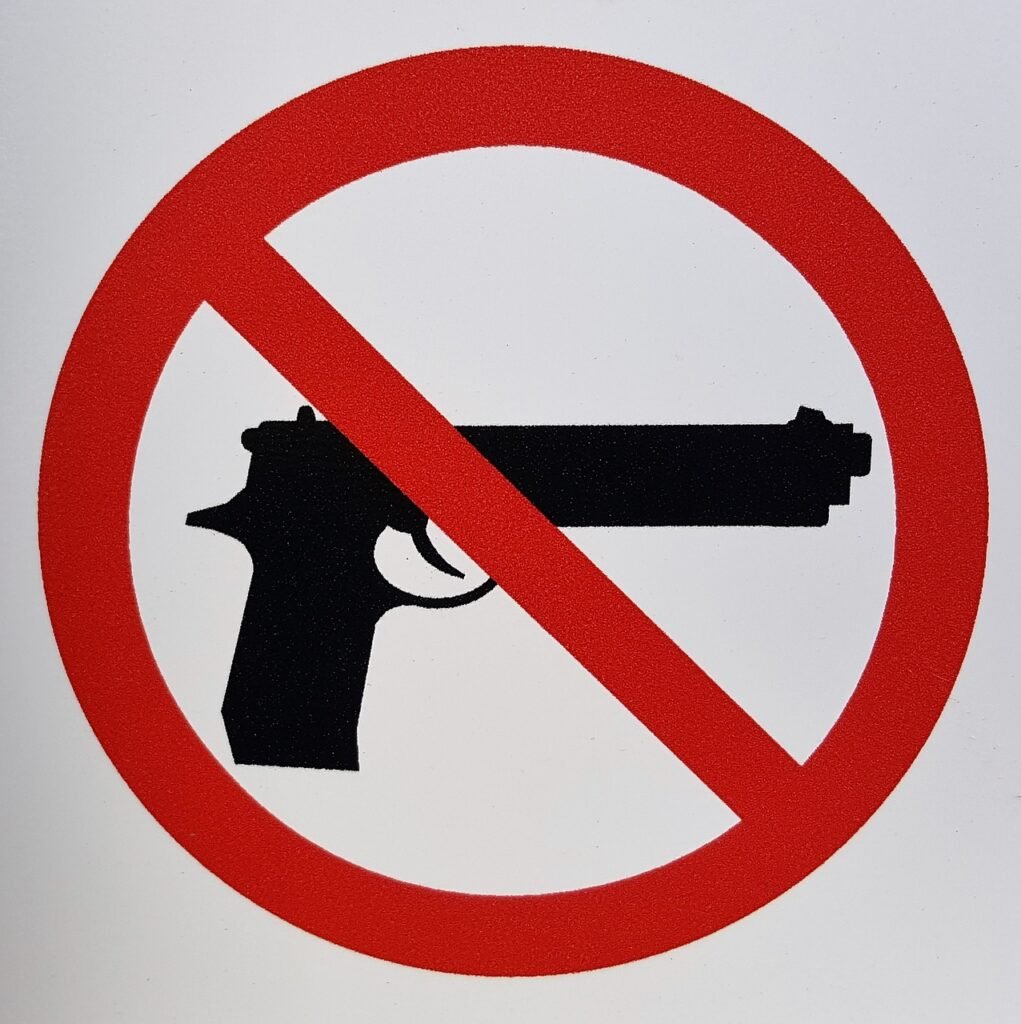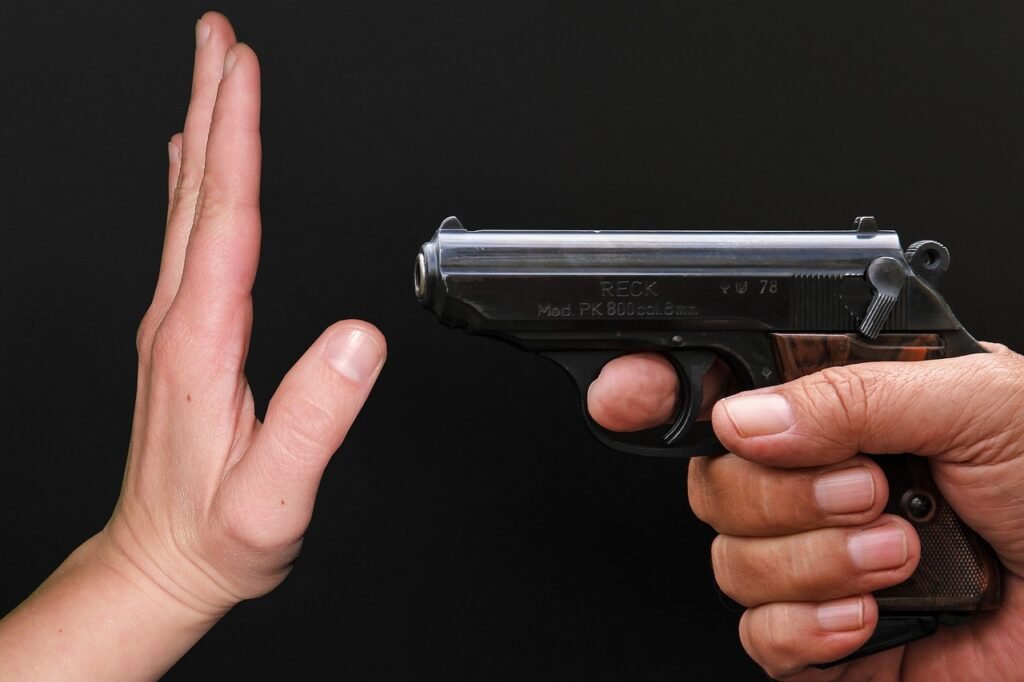In this article, you will gain valuable insights into the significance of adhering to gun safe regulations. With a focus on the importance of compliance, we will explore how these regulations not only contribute to enhanced safety but also protect individuals and communities. By delving into the key aspects of gun safe regulations, we aim to provide you with a comprehensive understanding of their impact and the role they play in promoting responsible gun ownership. So, let’s embark on this informative journey together and unravel the crucial reasons behind the implementation of gun safe regulations.

This image is property of pixabay.com.
Introduction
Gun safe regulations refer to the rules and requirements set forth by various entities to ensure the safe and responsible storage of firearms. These regulations are designed to prevent unauthorized access, reduce gun-related accidents and suicides, protect children and vulnerable individuals, and curb gun theft and the illegal firearm market. It is crucial to understand and comply with these regulations to promote public safety and responsible firearm ownership. This article aims to provide an in-depth look at gun safe regulations, their history, types, reasons, benefits, controversies, current trends, challenges, and impacts on public safety.
History of Gun Safe Regulations
Gun safe regulations have evolved over time in response to changing societal circumstances and increased awareness of the need for responsible firearm storage. The history of these regulations can be traced back to the early 20th century, when certain states in the United States began implementing laws regarding the storage of firearms. Major milestones include the establishment of the National Firearms Act in 1934, which imposed strict regulations on the ownership and storage of certain firearms, and the Gun Control Act of 1968, which mandated the safe storage and transportation of firearms across the country.

This image is property of pixabay.com.
Types of Gun Safe Regulations
Gun safe regulations come in various forms, including laws and legislation, industry standards and certifications, local, state, and federal regulations, and even international regulations. Laws and legislation establish legal requirements for gun owners regarding the storage and accessibility of firearms. Industry standards and certifications, such as the Underwriters Laboratories (UL) standards, provide guidelines for manufacturers to produce safe and secure gun safes. Local, state, and federal regulations vary in their specific requirements but serve to ensure responsible firearm storage practices. Additionally, international regulations play a role in setting standards for safe storage and transportation of firearms across borders.
Reasons for Gun Safe Regulations
The implementation of gun safe regulations serves several important purposes. Firstly, they aim to prevent unauthorized access to firearms, ensuring that only responsible and trained individuals have access to them. This helps reduce the risk of accidental shootings, suicides, and the use of firearms by criminals. Secondly, these regulations focus on reducing gun-related accidents and suicides by promoting safe storage practices and ensuring firearms are not easily accessible to individuals at risk. Thirdly, gun safe regulations protect children and vulnerable individuals by minimizing the chances of unintentional use or harm caused by firearms. Lastly, these regulations help curb gun theft and the illegal firearm market, reducing the availability of firearms to criminals.

This image is property of pixabay.com.
Benefits of Complying with Gun Safe Regulations
Complying with gun safe regulations offers numerous benefits to firearm owners. Firstly, it enhances safety and security by ensuring that firearms are stored in a manner that prevents unauthorized access. This reduces the risk of accidents, intentional harm, or theft. Secondly, complying with regulations helps gun owners avoid legal consequences and penalties. Failure to comply with these regulations may result in fines, imprisonment, or the revocation of firearms licenses. Thirdly, following gun safe regulations provides peace of mind for gun owners, knowing that their firearms are stored responsibly and securely. Lastly, complying with these regulations promotes responsible firearm ownership and reinforces the credibility and reputation of gun owners as responsible members of society.
Controversies Surrounding Gun Safe Regulations
While gun safe regulations are aimed at promoting public safety, they have not been without controversy. Some individuals argue against these regulations, stating that they infringe upon their Second Amendment rights. The debate on Second Amendment rights revolves around the interpretation and balance between individuals’ right to bear arms for self-defense and the government’s responsibility to regulate firearm ownership and storage for public safety. Additionally, there is criticism of government intervention in firearm storage, with some questioning the efficacy and necessity of such regulations. Balancing public safety concerns and individual freedoms is a challenging task, and these controversies highlight the ongoing discussions surrounding gun safe regulations.
Current Trends and Developments
Advancements in gun safe technology have been a significant trend in recent years. Manufacturers are developing innovative features, such as biometric fingerprint scanners and Bluetooth connectivity, to provide secure yet convenient access to firearms. Smart gun safes, equipped with electronic locking mechanisms and smartphone integration, are becoming increasingly popular among firearm owners. These technological advancements aim to strike a balance between security and accessibility. Moreover, the changing landscape of firearms, including the rise of 3D-printed guns and other emerging technologies, necessitates continuous adjustments to gun safe regulations to address new challenges. International collaborations and sharing of best practices also play a role in shaping current trends and developments in gun safe regulations.
Challenges in Implementing Gun Safe Regulations
Implementing gun safe regulations poses several challenges. One of the main difficulties lies in enforcement. Ensuring compliance with regulations across a vast number of gun owners can be a daunting task for law enforcement agencies. Additionally, the affordability and accessibility of secure gun safes may pose a challenge for some firearm owners. The cost of purchasing a quality gun safe and the availability of suitable storage options may prevent some individuals from fully complying with regulations. Moreover, resistance from certain gun owners who may perceive these regulations as unnecessary or intrusive can hinder their effective implementation. Lastly, achieving standardization across jurisdictions can be challenging due to varying state and local laws, making it difficult for firearm owners to navigate and comply with different regulations.
Impact of Gun Safe Regulations on Public Safety
The implementation of gun safe regulations has shown significant positive impacts on public safety. Firstly, these regulations have contributed to a reduction in gun-related injuries and deaths. Securely stored firearms are less likely to be accessed by unintentional users, reducing the risk of accidents and self-inflicted injuries. Secondly, gun safe regulations prevent unauthorized access to firearms, making it more challenging for criminals to obtain firearms illegally. By limiting their access to firearms, gun safe regulations contribute to the overall reduction of crime rates and protect communities. Thirdly, regulations aimed at curbing gun theft and the illegal firearm market restrict the availability of firearms to criminals, reducing the potential for violence and illegal activities. Lastly, promoting responsible gun storage practices through regulations decreases the risk of school shootings and mass violence incidents, as improperly stored firearms are less likely to end up in the wrong hands.
Conclusion
Gun safe regulations play a crucial role in ensuring the safe storage and responsible ownership of firearms. By preventing unauthorized access, reducing gun-related accidents and suicides, protecting vulnerable individuals, and curbing gun theft and the illegal firearm market, these regulations contribute to public safety. Complying with gun safe regulations enhances safety and security, helps avoid legal consequences, promotes responsible firearm ownership, and provides peace of mind for gun owners. However, there are controversies surrounding these regulations, balancing the need for public safety with individual freedoms. Current trends and developments in gun safe technology, as well as collaborations at international levels, shape the future of these regulations. Despite challenges in implementation, gun safe regulations have a positive impact on public safety by reducing injuries and deaths, preventing access by criminals, decreasing the risk of school shootings, and promoting responsible gun storage practices. It is essential for firearm owners to understand and comply with these regulations and to continually educate themselves on any updates and changes in order to promote the safe and responsible use and storage of firearms.
